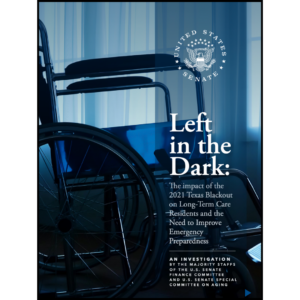How Assisted Living Should Prepare for Disaster
Assisted living regulations vary widely from state to state, and official involvement in a facility's disaster preparedness can vary, as well. No matter if your facility reports to a licensing office or not, preparation is the key when it comes to disasters. Depending on the size of the facility, the administrator can designate an individual to coordinate all the facility's disaster's preparation. However, every staff and resident in your facility should be prepared for a disaster.
What follows are checklists to ensure disaster preparedness at the organizational, staff, and resident levels. At the organizational level:
Provide instructions, assign duties, and assign posts for when a disaster strikes.
Maintain first aid/CPR training.
Train staff to assist with medical, physical, or mental needs of residents—for example, provisions for oxygen and wheelchairs.
Review disaster preparedness and evacuation plans with staff at least once year, and with new hires.
Post contacts and numbers of those who should be notified in an event of an emergency.
Ensure availability of disaster-trained staff on all shifts.
Conduct safety inspection checks throughout the facility at least once a year and keep an updated log of the inspections.
Provide staff with formal disaster training—for example, from the American Red Cross, emergency management agencies, or the local fire department.
Provide staff fire extinguisher training. Get them familiar with the classes of extinguishers and what each one of them does.
Conduct at least annual drills with staff and residents, and document all drills that take place.
Have a system in place to notify families of a disaster, particularly of any relocations that may occur.
Have an in-house disaster team, headed by the administrator, with key staffers.
Have professional counselors on standby for residents, families, and even your staff.
Emergency Supply Kits
Emergency supply kits should contain:
Water: A gallon of water per person per day.
Food: At least a three-day supply of nonperishable food.
Miscellaneous items such as first aid kits, nonprescription medications, tools, blankets, a flashlight with extra batteries, and a National Oceanic & Atmospheric Administration weather or AM/FM radio with extra batteries.
Relocation Plans
The best way to prevent any problems of relocating residents is to have a relocation facility ready for any disaster. When a disaster occurs at your facility, you need to coordinate with your relocation facility and let staff there know how many people are coming and what special needs may need attention. It's always good to have more than one relocation facility available in times of a disaster. Always keep an updated list of these relocation sites in your disaster plan. Include procedures for evacuating, methods of transportation, meeting special needs en route, and working with coordinators of these facilities.
Written Plans
All emergency-related disaster procedures and evacuation plans should be in writing and distributed or otherwise made available to staff and residents. Evacuation and meeting maps should be posted throughout the facility, as well. It's a good idea to work with local police and fire departments, hospitals, and emergency services so they can get familiar with your facility and residents. You may want to provide them with the following information:
Contact names and numbers of staff in charge of decision making
Number of staff and residents throughout the facility, including numbers for nights, weekends, and holidays
Number of residents with disabilities and their locations
Disaster plans/procedures of your facility, with evacuation maps
List of all relocation sites, coordinator names, and how residents will be transported to these sites
List of staff training qualifications and specific responsibilities
Documents of disaster drills conducted
Strong and weak points discovered in any drills, emergency responses, and disaster plans
Meeting areas for residents and staff
Arrangements for meeting with police and fire departments, emergency services, and hospitals to discuss preparations for a disaster
Resident Information
Residents should be provided the following:
Information on the kinds of disasters in which the facility is prone
Location of nearest emergency telephone—post any emergency numbers near all these phones
Nearest exits
Nearest fire pull stations
What to do if residents smell smoke or see a fire
Where to meet when the facility is evacuated
How families will be contacted (and make sure staff keep updated contact information for all families)
Involve residents with disaster drills.
Meet with residents and ask them questions about disaster planning and evacuation procedures.
Edward Brachman can be reached at eabrachman@gmail.com.
I Advance Senior Care is the industry-leading source for practical, in-depth, business-building, and resident care information for owners, executives, administrators, and directors of nursing at assisted living communities, skilled nursing facilities, post-acute facilities, and continuing care retirement communities. The I Advance Senior Care editorial team and industry experts provide market analysis, strategic direction, policy commentary, clinical best-practices, business management, and technology breakthroughs.
I Advance Senior Care is part of the Institute for the Advancement of Senior Care and published by Plain-English Health Care.
Related Articles
Topics: Articles , Operations , Risk Management











